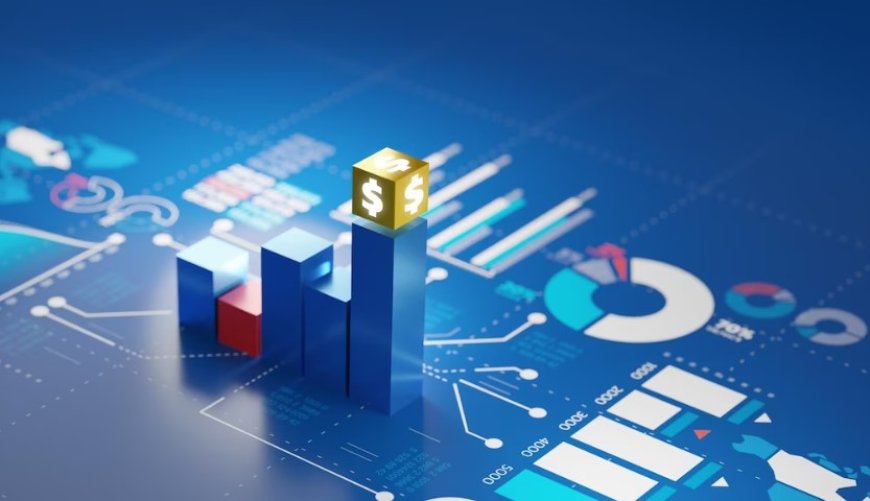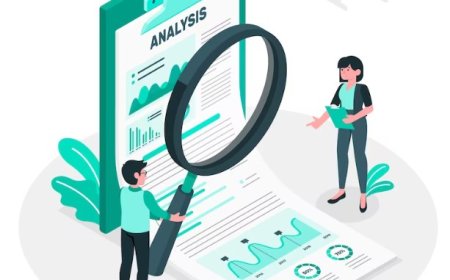Industry wise Data Analysis and Interpretation: Insights
Uncover powerful insights with industry-wise data analysis and interpretation. Future-proof your business with data analytics.

In today's data-driven world, businesses have access to vast amounts of information. However, the real value lies in analyzing and interpreting this data to gain actionable insights. Data analysis and interpretation enable organizations to uncover patterns, trends, and correlations that can drive strategic decision-making and unlock new opportunities. In this blog, we will explore several examples of data analysis and interpretation across different industries. From retail to healthcare, finance to marketing, we will witness how organizations leverage data to make informed decisions and achieve business success. So, let's dive into the world of data analysis and interpretation and witness the power of insights!
Retail: Analyzing Customer Purchase Patterns
In the retail industry, data analysis plays a vital role in understanding customer behavior and preferences. By analyzing transactional data, retailers can identify purchase patterns, product affinities, and customer segments. For example, a clothing retailer may discover that customers who purchase winter coats also tend to buy scarves and gloves. Armed with this insight, the retailer can optimize product placement, offer personalized recommendations, and create targeted marketing campaigns to maximize sales and customer satisfaction.
Healthcare: Predictive Analytics for Disease Diagnosis
In healthcare, data analysis and interpretation have the potential to save lives. By analyzing patient data, such as medical history, test results, and symptoms, healthcare providers can develop predictive models for disease diagnosis. For instance, data analysis can identify patterns and risk factors for diseases like diabetes or cancer, allowing early detection and timely interventions. This enables healthcare professionals to provide personalized treatment plans and improve patient outcomes.
Finance: Fraud Detection and Risk Assessment
Data analysis is a crucial tool in the finance industry for fraud detection and risk assessment. By analyzing transactional data, patterns of financial activity, and historical data, financial institutions can identify suspicious transactions and potential fraud. Additionally, data analysis helps assess credit risk by analyzing credit history, payment behavior, and other relevant factors. This enables lenders to make informed decisions about loan approvals and mitigates the risk of default.
Marketing: Customer Segmentation and Targeted Campaigns
In the marketing field, data analysis drives customer segmentation and targeted campaigns. By analyzing demographic data, browsing behavior, and purchase history, marketers can identify distinct customer segments with unique preferences and needs. This allows them to create tailored marketing messages, personalized offers, and targeted advertisements that resonate with specific customer groups. As a result, marketing efforts become more effective, leading to increased customer engagement and conversion rates.
Manufacturing: Quality Control and Process Optimization
Data analysis is instrumental in manufacturing for quality control and process optimization. By analyzing sensor data, production metrics, and historical data, manufacturers can identify patterns and anomalies that affect product quality. This helps them implement proactive quality control measures, minimize defects, and optimize production processes for increased efficiency and cost savings.
Education: Student Performance Analysis
In the field of education, data analysis and interpretation are revolutionizing the way we understand student performance and improve learning outcomes. By analyzing student data such as grades, attendance records, and demographic information, educational institutions can identify patterns and trends that affect academic success. This information can be used to develop targeted interventions, personalize instruction, and provide additional support to students who may be at risk of falling behind. Data analysis also enables educators to assess the effectiveness of different teaching strategies and curriculum materials, leading to continuous improvement in educational practices.
E-commerce: Customer Behavior Analysis
E-commerce companies thrive on understanding customer behavior to drive sales and enhance the user experience. Data analysis plays a crucial role in this domain by analyzing customer browsing patterns, purchase history, and interactions with the website. With this information, businesses can personalize product recommendations, create targeted marketing campaigns, and optimize the website's design and functionality to increase conversion rates. Moreover, data analysis helps identify trends in customer preferences and anticipate market demands, allowing businesses to stay ahead of their competitors and make data-driven decisions.
Social Media: Sentiment Analysis and Trend Identification
Social media platforms generate an enormous amount of data every day. Data analysis and interpretation enable businesses to gain insights into consumer sentiment, opinions, and trends. By analyzing social media data, including user comments, posts, and interactions, companies can perform sentiment analysis to understand how customers perceive their brand or product. This information helps businesses improve their reputation, address customer concerns, and enhance their marketing strategies. Furthermore, data analysis helps identify emerging trends and topics of interest, enabling businesses to tailor their content and stay relevant in the ever-evolving social media landscape.
Transportation: Route Optimization and Demand Forecasting
In the transportation industry, data analysis plays a crucial role in optimizing routes and forecasting demand. By analyzing historical traffic data, weather patterns, and customer preferences, transportation companies can optimize their routes to reduce travel time, fuel consumption, and overall costs. Additionally, data analysis helps in forecasting demand, enabling transportation providers to allocate resources effectively and ensure efficient operations. This leads to improved customer satisfaction, reduced environmental impact, and enhanced profitability.
Sports Analytics: Performance Analysis and Predictive Modeling
Sports teams and organizations are increasingly using data analysis to gain a competitive edge. By analyzing player performance metrics, game statistics, and opponent data, sports analysts can assess player performance, identify strengths and weaknesses, and make data-driven decisions on tactics and strategies. Furthermore, predictive modeling allows teams to forecast player injuries, predict game outcomes, and optimize player recruitment and training. Data analysis in sports not only enhances team performance but also enhances the fan experience through advanced statistics and engaging visualizations.
At the end of the day, Data analysis and interpretation are powerful tools that have transformed industries across the board. We have explored a wide range of examples that showcase the diverse applications of data analysis in various sectors, including retail, healthcare, finance, marketing, manufacturing, education, e-commerce, social media, transportation, sports analytics, energy management, and government. From improving customer experiences and optimizing operations to making data-driven decisions and predicting future outcomes, data analysis has proven to be invaluable in driving innovation and achieving business success.
By harnessing the power of data analysis, organizations can unlock insights, identify patterns and trends, make informed decisions, and gain a competitive edge. Whether it's identifying customer preferences, predicting market trends, optimizing processes, enhancing product development, or improving service delivery, data analysis provides a solid foundation for effective decision-making.



























































